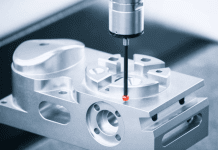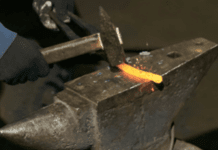Spring-loaded pins, spring-probe, or pogo pins are the titles of the same electrical connector that we casually called a pogo pin. It took its name after finding it resembled a pogo stick. A pogo pin is an integral part of many electronic devices. Its durability, resistance against corrosion, and the ability to withstand mechanical shock are a few qualities that one can reckon for.
Check the high-end products such as stopwatches, tablets, and notebooks, and you will find pogo pin connectors creating a swift and efficient connection.
This blog post digs deep into the structural parts of a pogo pin. To know more about pogo pin connectors, click on https://www.connectors-cables.com/pogo-pin-connectors/.
Parts Of a Pogo Pin and Their Function
The pogo pin is a special make. It is the structure that makes the pogo pin stand out. Pogo pin consists of three parts.
- Spring
- Plunger
- Barrel
Each part is a specialized component of the pin capable of withstanding vibrations and shock, which are the causes of interrupted electrical connections.
The incredible helical spring is integrated technically. To be precise, it constantly exerts a normal pressure on the opposite side of the contact plate or mating receptacle, the outer surface of the pogo pin that comes in contact with the rest of the device’s assembly.
This application of pressure by the spring is of great value because it counteracts or cancels the effect of another movement which may result in an intermittent connection.
The phenomenal helical spring is the unique feature or component of a pogo pin protecting the pin against vibrations and reducing the chances of intermittent connections.
The barrel is the part of the pogo pin which accommodates the plunger once the spring is compressed. After force is applied to the pin, the spring compresses. This situation makes the plunger move in the barrel. Since the barrel is a contained compartment, it holds the plunger, and there is no way out for the plunger to leave the barrel, although the spring constantly pushes the plunger during the operation.
The plunger and barrel are technically designed. Since momentary disconnections can happen because of vibrations or movement, the components must be of a specific design that allows sliding.
The barrel’s tip is concave; thus, the plunger finds it easy to retain inside while maintaining some space. This feature reduces the chances of momentary disconnections.
Materials
The components are made with high-end materials to focus more on durability, resistance, and connectivity. The base material for the plunger and barrel is brass or copper. A thin layer of nickel on the top makes it extraordinary.
The helical spring is made using copper and steel alloys.
Their performance double after the gold plating renders them contact-resistant and enhances durability.
Conclusion
The most durable and efficient pogo pin is composed of three parts. A helical spring, barrel, and plunger. These components are made using brass, copper, steel, and copper alloys. The gold and nickel plantings on the outer surfaces of the spring, plunger, and helical ace the connectivity game.
When the spring compresses, it pushes the plunger into the barrel. The barrel accommodates the plunger while maintaining a distance and reduces the chances of intermittent disconnectivity. The shape, structure, and material of a pogo pin make it unique in a pool where many other pins exist.










